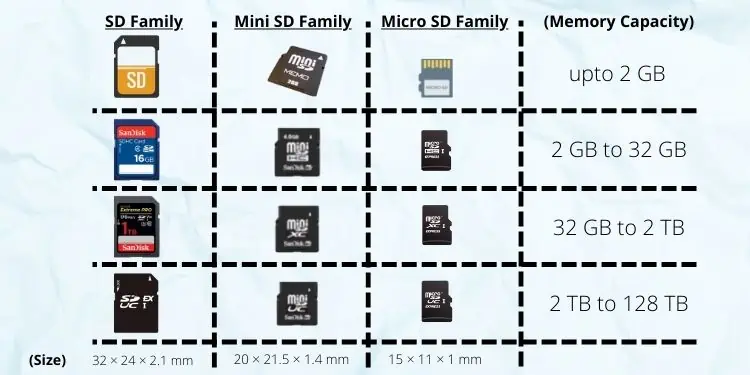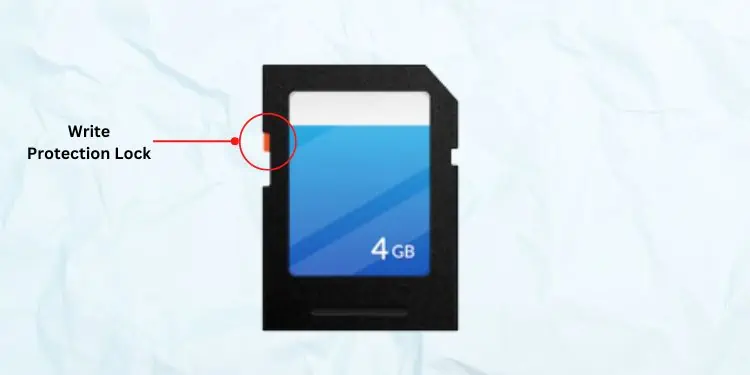Whether it be on our mobile phones, cameras, gaming consoles, or laptops, we all use Secure Digital (SD) cards once in a while for storage purposes. Well, everyone prefers them, thanks to their small size, durability, and non-volatile memory.
If you have a knack for technology, you’ve probably wondered how do SD cards work. Technically speaking,they are semiconductor-based flash memory cards that use NAND flash memory for storing data.
Moreover, they utilize the ‘Write Protection’ mechanism to prevent accidental data loss. If you wish to explore more, this article will guide you with everything you should know about SD cards and how they work.
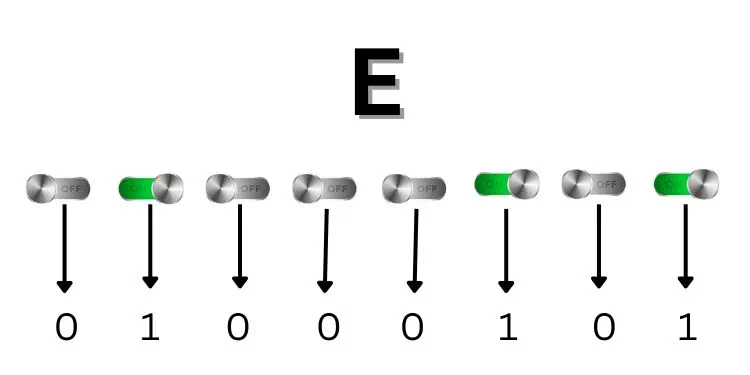
SD Cards Use NAND Flash Memory
The first thing to know is that SD cards embed NAND flash memory chips that stores blocks of data in the form of charges. Basically, the technology adopts control and floating gates that help control data flow. Thus, if you’re transferring files, documents, or even photos to SD cards, they are all stored electronically.
Moreover, NAND is based onElectronically Programmable Read Only Memory (EEPROM), meaning it can be programmed and erased electronically.
Basically, these NAND types are one of the many factors that determine the lifespan of SSDs, SD cards, and other memory drives. Hence, if you have an SD card supporting 3D NAND, it generally lasts longer.
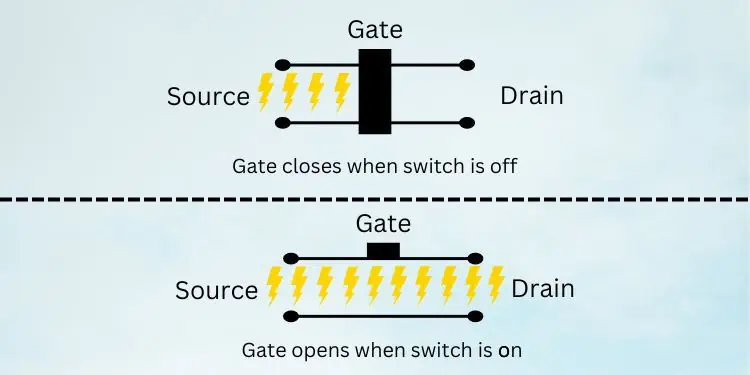
Although most manufacturers claim that their SD cards last ten years, you should know that there are still other things that determine the lifetime. For example, using the memory cards at extreme temperatures, breaking the pins, or keeping them near a strong magnet (electromagnetic field) may negatively impact their lives.
How Do SD Cards Store & Retrieve Data?
In earlier days, we heavily relied on other storage drives, like Memory Sticks, Compact Flash cards, Smart Media cards, etc. Eventually, they were replaced by SD cards as they are relatively lighter in size and additionally support large storage.
Looking at the SD card closely, you’ll likely notice a row of terminals (pins) at the top section. Basically, some pins here are responsible for powering the card, while others work to help users store orrecover data, like photos, videos, documents, and other files.
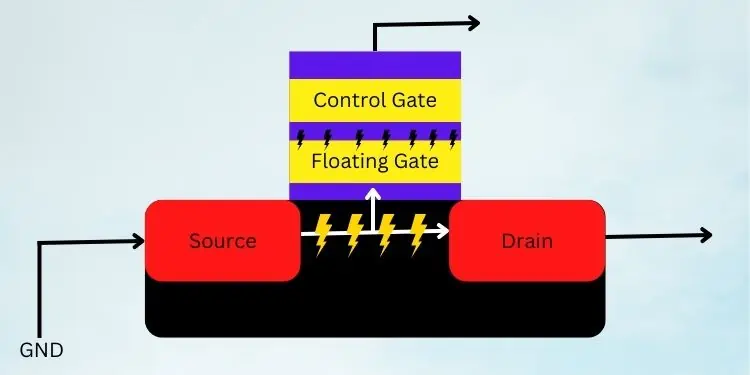
Like other storage devices, these flash memory cards alsoconsist of transistors(that work like electrical switches) to help store data in ASCII code (a combination of 0 and 1). Hence, if the switch is turned on, the value ‘1’ is stored in the SD card, and if off, ‘0’ is stored.
For example, if you try storing the word ‘Example’, it will be stored as ‘01000101 01111000 01100001 01101101 01110000 01101100 01100101’.
Well, the usage of regular transistors only aids in storing data temporarily. Hence, the stored data get lost, and we can’t retrieve them again. Thus, the NAND technology adopted by the SD cards utilizesMOSFET (Metal–Oxide–Semiconductor Field-Effect Transistor)that uses control and floating gates to store data permanently.
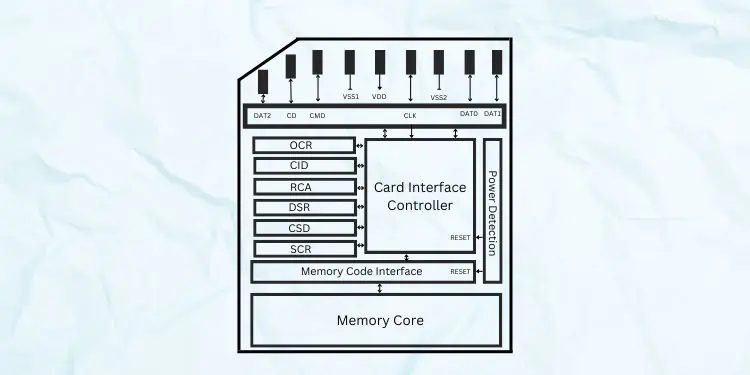
As shown in the illustration above, a typical transistor consists of a single gate. Here, when some positive voltage is passed from the source (value is 1), the gate is open, and data is stored. Likewise, when there is no voltage (value set to 0), the gate is closed, and information is not stored.
